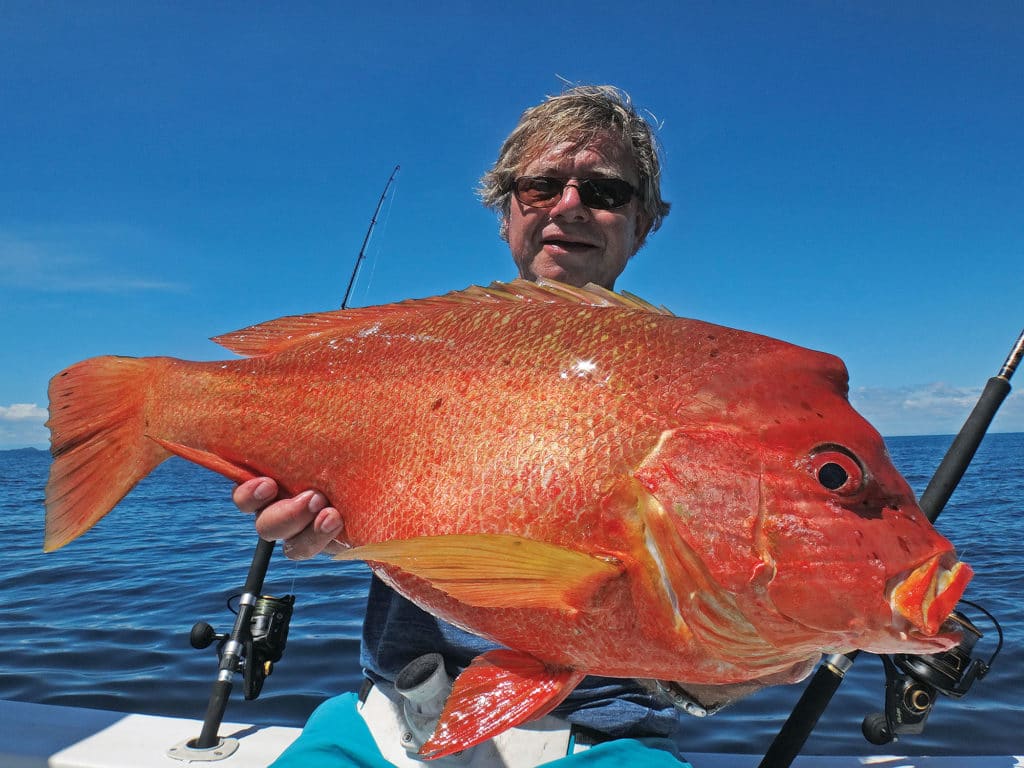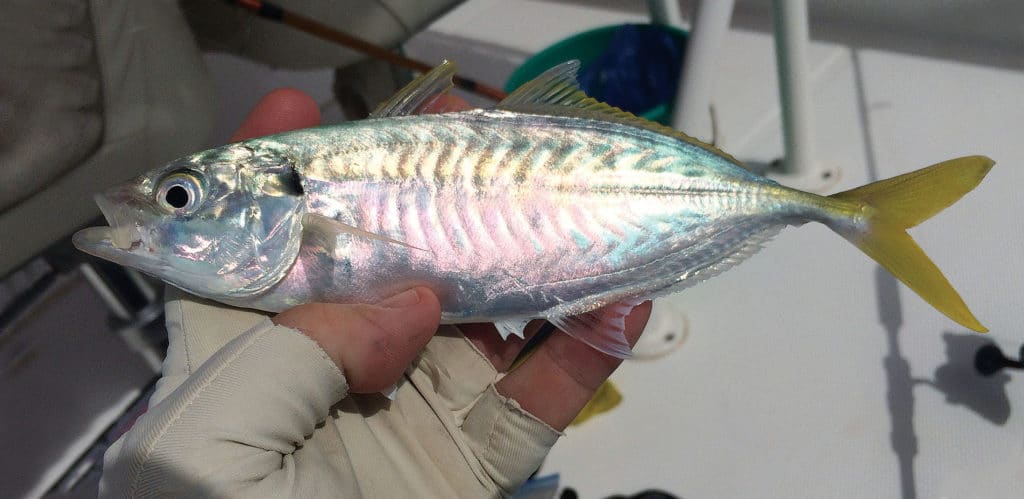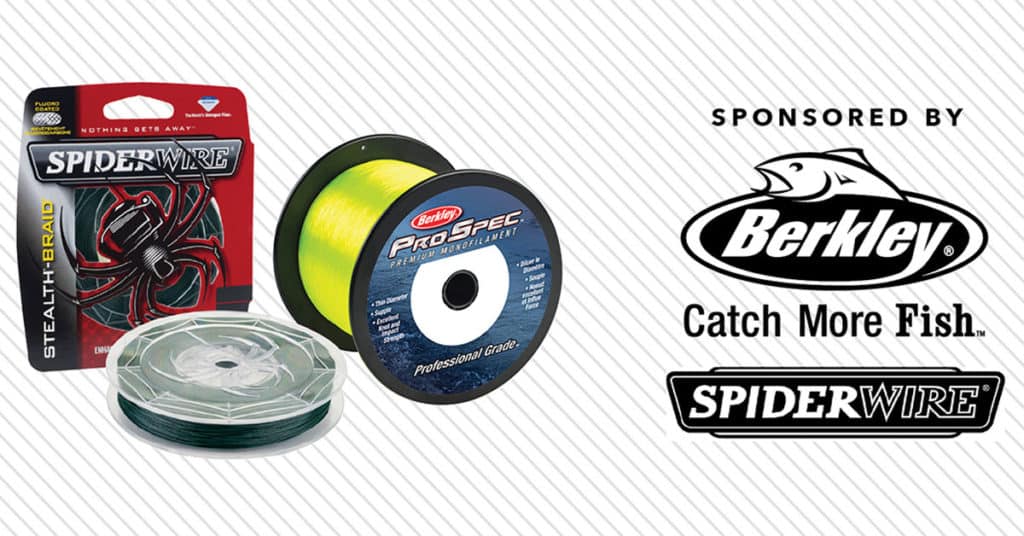In each issue of Sport Fishing magazine, a panel of five international expert ichthyologists identifies unusual and often amazing fishes in photos submitted by readers. Find out what they are and learn fascinating facts about them.
Bloody Beautiful Fish
QUESTION: I caught this beautiful snapper off the coast of Madagascar. I’m anxious to know more about it!
Phillippe Pletincx
France

ANSWER:
What you have there, Phillippe, is a great example of one of the more distinctive tropical snappers: the blood-red, or humphead snapper (Lutjanus sanguineus). This species occurs only along the west coast of Africa from Natal, South Africa, north to the Red Sea, including the waters around Madagascar. Adult blood-red snapper frequent rocky and coral-reef areas to depths of around 300 feet during the day. These fish have been observed by some anglers to prefer slightly silty bottoms, where they forage for crustaceans and mollusks, mainly at night and often in relatively shallow water (25 to 40 feet).
Juvenile blood-red snapper are relatively colorful, with a broad brown bar stretching from the upper jaw to the dorsal fin and a series of reddish lines along their sides. Adults, such as your fish, however, tend to move to deeper water, where they lose the stripes and become a uniform light to dark blood-red color. They’re reported to grow to around 40 inches (1 meter) in length and up to 50 pounds, and have been aged to at least 13 years. Like many tropical snappers, their growth rate is initially fast but then slows markedly at around 2 feet in length once they mature, when they are three to four years old.
No one has yet submitted this species to the International Game Fish Association for a record; yours could have been the first all-tackle world record for L. sanguineus!
—Ben Diggles
I Dream-A Salema
QUESTION:
A couple of summers ago, I caught this on a sabiki off La Jolla (Southern California) while fishing for mackerel for bait. I hadn’t seen one before, after catching bait here for 17 years. I caught another one this past summer also. What is it?
Morgan Promnitz
Oceanside, California

ANSWER:
Hey, Morgan, that little striped fish is the salema, Haemulon californiensis, the most abundant species of grunt in Southern California waters. You can find them in large schools around kelp and rocks, from barely intertidal waters down to perhaps 130 feet. Salema, which grow to only about 12 inches long, have been taken as far north as Monterey Bay in central California and as far south as northern Peru. Salemas feed at night, on larger zooplankton, and folks using tiny hooks catch fair numbers of them from piers and jetties. In bygone days, when U.S. commercial hook-and-line fishing vessels worked the Mexican coast for tuna, salema were often used as chum.
—Milton Love
Scadzooks
QUESTION:
I caught this scad on a sabiki near Doha, Qatar, last year. The place was loaded with them, but none of my fish books seem to have this exact one listed. Can you shed any light on its identity for me?
Steve Wozniak
Alamo, California

ANSWER:
That, Steve, is a nice example of a yellowstripe scad (Selaroides leptolepis), alternatively named the smooth-tailed trevally. Aside from the relatively small scutes just ahead of its tail, the main giveaways separating this species from other small, yellow-striped Carangids (trevallies and jacks) such as the oxeye scad (Selar boops) are the relatively small eye and prominent black spot on the upper edge of the operculum. In fact, the genus name Selaroides means “like Selar,” in reference to the similarity between these two fishes. Yellowstripe scad are common throughout the tropical Indo-Pacific region from the Persian Gulf to Northern Australia, Vanuatu and north to Japan. They grow to a maximum length of around 9 inches. Their diet consists of small planktonic crustaceans and fish. S. leptolepis forms large demersal schools in estuaries and inshore areas over soft-bottom habitats at depths shallower than 150 feet, which makes them a common target for inshore trawl fisheries. (Between 100,000 and 200,000 tons of this species are landed annually worldwide!) Like some other carangids, juvenile yellowstripe scad sometimes associate with large jellyfish, using them for protection and as a foraging base, a sort of biological FAD, if you will.
—Ben Diggles
Goatee Fish
QUESTION:
I have fished off Fort Lauderdale, Florida, for more than 20 years. Recently, while fishing a reef in 65 feet of water, I hooked this fish, which I’ve never seen before. I’m sure you can give me some information on it.
John Hill
Homosassa, Florida

ANSWER:
You caught a spotted goatfish, Pseudupeneus maculatus, John. This is one of four goatfish species occurring in the central western Atlantic region; it ranges from New Jersey south to Brazil, including Bermuda, the Bahamas, the Caribbean Sea and the Gulf of Mexico. Adult spotted goatfish are usually associated with reefs, to depths of approximately 300 feet. Like all goatfishes, this species bears a pair of chemosensory barbels under its chin, which it uses to search for food items that are buried in the substrate. The spotted goatfish is a relatively small species, reaching a maximum length of about a foot. It’s highly prized as food but has also been implicated in cases of ciguatera poisoning.
—Ray Waldner
Read Next: Strange Fishes From the Deep — Hookthroat Bass and More
Congrats to our longtime Fish Facts expert, Ben Diggles. Diggles recently received the Ron Dempster Award, cited as the most prestigious award of the Australian National Sportfishing Association Queensland, for outstanding contribution to the enhancement of recreational fishing. SF is proud to have Ben on our panel of experts.
Sport Fishing‘s Prestigious International Panel of Experts
Northeast
Mike Fahay, Sandy Hook Marine Lab, New Jersey
Southeast
Ray Waldner, Ph.D., Palm Beach Atlantic University, Florida
Gulf of Mexico
Bob Shipp, Ph.D., University of South Alabama
West Coast
Milton Love, Ph.D., UCSB, California
Far Pacific
Ben Diggles, Ph.D., Queensland, Australia
Bluewater Pelagics
John Graves, Ph.D., Virginia Institute of Marine Science

CHALLENGE OUR EXPERTS (And Win Up to 10,800 Yards of Line!)
Send in your question and any relevant photos of your mysterious catch or observation for our experts’ ID and feedback. If we publish your question and you have a shipping address within the United States or Canada, you’ll win a 3‑pound spool of Berkley Pro Spec ocean-blue or fluorescent-yellow monofilament (1,000 to 10,800 yards, depending on line strength) or a 1,500‑yard spool of Spiderwire Stealth braid up to 100‑pound‑test! Send questions and images via email to fishfacts@sportfishing.com (include your hometown) or via post to Sport Fishing Fish Facts, 460 N. Orlando Ave., Suite 200, Winter Park, FL 32789.








